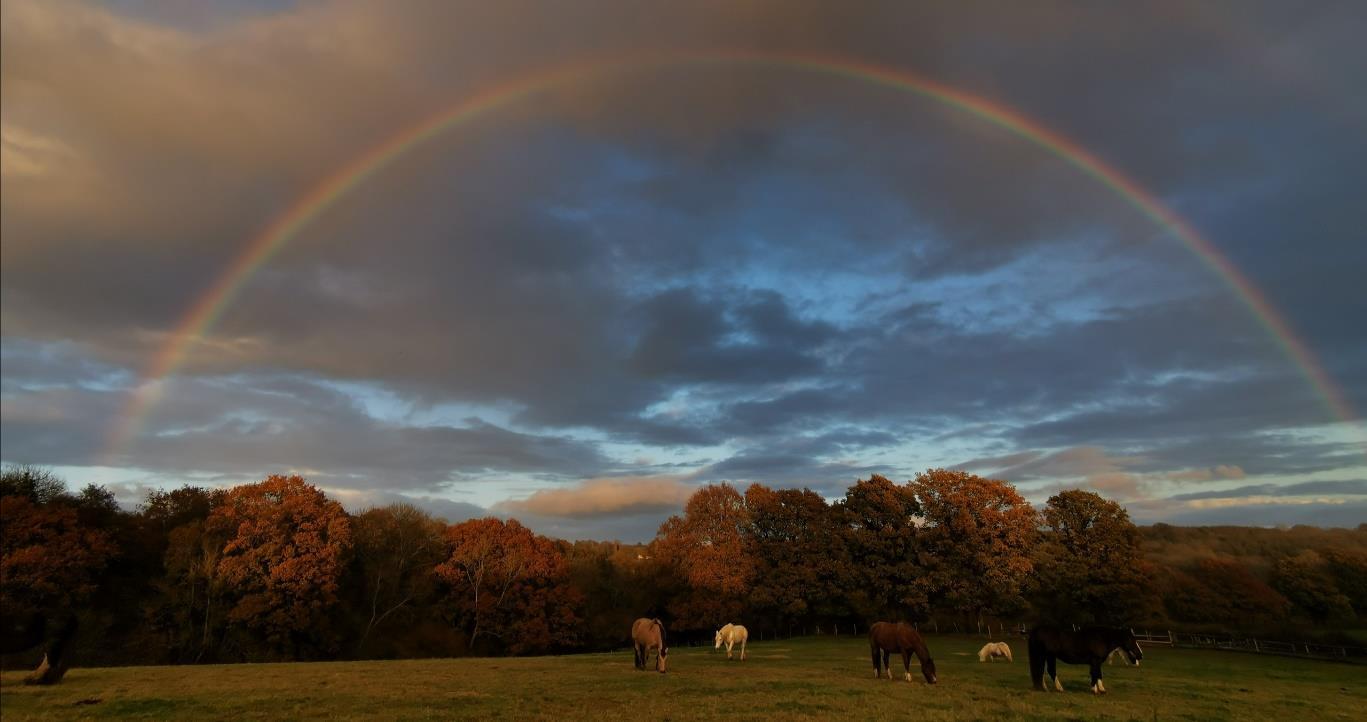
8 minute read
Regeneration
By: Mary-Joy Johnson, UK

Advertisement
“Look what was sown by the stars At night across the fields We are not defined by scars But by the incredible ability to heal” Lemn Sissay
I know when I go to the fields, when I go to the horses, I am as close to the meaning of this poem as I could possibly be.
Healing and regeneration are processes of positive change, within a responsive and dynamic system. Human health, in physiological and psychological terms, requires a certain dynamism to allow growth through change, challenge and response to disturbance or damage.
Speaking of disturbance and damage. 2020. 2021. Wow. Is everyone ok? (I just need to say that, in print!)
RECALIBRATE
I am sure many of you reading this will have had a very difficult year (and beyond). The need to take stock and to recalibrate, to ‘regenerate’, will not be lost on you. However, it can also feel like a burden. To ‘effort’ when you are exhausted and depleted is not the way forward, or certainly not always the first step. No. First we must rest, seek support where necessary, and allow some of the ‘reset’ needed, to come via a route of compassionate community care. I say this because the phrase ‘self-care’ still puts the onus on us as individuals to do the work: to take full responsibility for our recovery. When the events we have been strained by include those on a community, societal and global scale, then surely the healing and regeneration comes from a community, societal and global source.

We, like horses, are a highly social species. I don’t mean this in terms of sociability or that we have a high drive to be surrounded by others always, (far from it in many cases), but we do live in mutually influencing communities. We benefit from shared resources. We are raised in ‘families’ where our survival depends on a ‘primary carer’, and usually on extended connections with other humans. We are affected and influenced by our cultural community and country of birth. We are not separate.
When we observe the nuanced and multiple expressions of relationship within a herd of wild horses, we see a myriad of complex affiliative (bonding) behaviours. These appear to be sustained and sustaining across a lifetime, and serve to support the survival and thriving of a herd. Where possible, horses in domesticated herds benefit from the same sustained and sustaining interactions within an established herd, across their lifespan.
Nature models both ease and struggle in abundant and simple ways. I enjoy looking at and learning from these examples, as reminders of my own innate capacity to heal and grow after periods of difficulty and challenge. 2020 and 2021 are giving me plenty of practice! I have been forced, like so many, to refocus on my primary health and wellbeing needs.
One of the ways I have repeatedly resourced and regenerated myself over the past 12 months was to spend simple, ‘non-agenda’ time with the herd of horses in my care. This has been and is easy to do as most of my husbandry follows the wild horse blueprint, and they live in as natural a setting as I can provide. I have had the most profoundly restorative experiences with them throughout the year. All, despite the profound challenges of: Covid-19, national and global social/racial injustice, a site move and the growth of the herd through the merging of 2 established smaller herds. In many ways it has been the dynamism, yet grace with which the horses have embraced their challenges, that has been my greatest inspiration.
THE PERFECT TIME
It has always been a dream of my colleagues and I that we would bring our two herds together; one from my private practice on one site, and one from the charity I work with, on the other. We had always been waiting for the right time, right circumstances, and right budget; waiting

for some sort of perfect alignment, where all would happen smoothly, for the humans as well as the horses. Yet the ‘perfect’ time came when all seemed wrong - in the middle of a pandemic! Many of the human team were dealing with ill health, changed home circumstances, or limited resources. There was a pull on our physical and mental capacity as we forged new ways to work with programs continuing to be delivered in ‘Covid safe’ ways. As we leaned on each other like never before, in congruent and authentic truth of our struggles, at times at a loss as to how we could go on as before, it dawned on us that things would never be the same. This needed to be more than a ‘project’, a ‘site move’ or a ‘business development’. It needed to be a wholesale regeneration of our underlying beliefs, dreams and game plan; a growth of our capacity, but from a deeper source.

This time of change could have easily been accompanied by conflict. Stress, change and challenge can provoke conflict behaviours in both horses and humans. When the groundwork has been done though, when each being is honoured and respected as an individual with positive regard for all, wonderful things can happen. Time after time we were wowed by the grace and elegance of the new relationships forming within our combined herds, as they became their own growing community. Horses who had never met showed curiosity, strength and a willingness to find out how to live together. New bonds were being forged quickly, friendships and alliances were made, all so joyful to observe. As our human community was being taken to a new level of growth, and our cooperative qualities were being tested to the max, each day the horses modelled a resilience and openness to change and newness that took our breath away. We can also look, in an even broader way, at the regenerative power of nature through large scale environmental, transformational processes that have happened elsewhere. Again, not because things were made or forced to be ‘right’, but where openness, curiosity and a willingness to wait and see, to fail and to take new turns, became the guiding principle. One such example where nature has taken the lead and triumphed is a project on the Knepp Estate in West Sussex, UK (near to where I am based). Over the past 20 years they shifted their failing mainstream agricultural business, and instead, focused on a regenerative approach to land and soil health across their impressive 3,500 acre farm. In a thoughtful, yet hands off approach, they turned their land back over to nature. They introduced a herd of native horses, deer, cows and pigs in areas across their land, replicating the natural behaviours of ruminants and non-ruminant herbivores, and their crucial role in the soil and grass cycle of life. In so doing the landscape changed. It regenerated. A remarkable number of wild species of invertebrate, mammal and bird returned and thrived. More than was ever imagined.
REGENERATIVE POTENTIAL
Often our own personal difficulties and lack of wellbeing can stem from not being attuned to our own regenerative potential. We can be stuck

in a protective cycle where change feels like too much of a risk. Perhaps because we can’t see it or we don’t believe positive change is possible. Maybe it has never been modelled to us, or maybe life has been so chronically tough or traumatic, that those skills and the self-belief to fuel them have not developed. However, when we combine wellbeing practices, particularly when we have reached an ‘edge’, with a return to being in more natural spaces, we amplify the potential to regenerate, beyond the sum of its parts. I am sure many of us can attest to a deeper sense of ‘benefit’, a broader and more profound orientation, and resetting of our own mental and physical systems, when in healthy and dynamic natural environments. Nature shows us, without a doubt, that this is possible.
The combined work of; regenerating natural spaces alongside our own healing, amplifying the chorus of life being lived, with horses as an intrinsic part of the setting, puts the Equine Facilitated Experience/Intervention into a new territory of healing practice. Horses are a link, through a relational lens, whereby we can communicate with and experience the wider natural world (macrocosm), and our own intimate relational world - in particular the relationship we have with ourselves (microcosm).
My focus for 2021 is now on what I CAN do. I can focus on that 0.1-degree internal shift that explodes new possibilities. As in the world of regenerative conservation, the reintroduction of semi-feral herds of horses into ‘domestic wild’ spaces is being used more and more, in recognition of horses as an intricate part of sustainable ecosystems. They are now recognized for how they can contribute to an ever-increasing regeneration of the land. Something about this return to an understanding of horses as mammals within the ecosphere, is evocative of a change we all might benefit from. Can we reintroduce horses into our own domestic lives? Can we create a space that is welcoming to the ‘wild’ and new; can we learn from the horses’ ways of living as authentic, adaptive communities? Can we grow, not despite our current challenges, but because of them? When I look to my new, grown herd, thriving and living through their challenges with health and vitality, I truly believe we can.
Stay Safe and Well. ~*~












